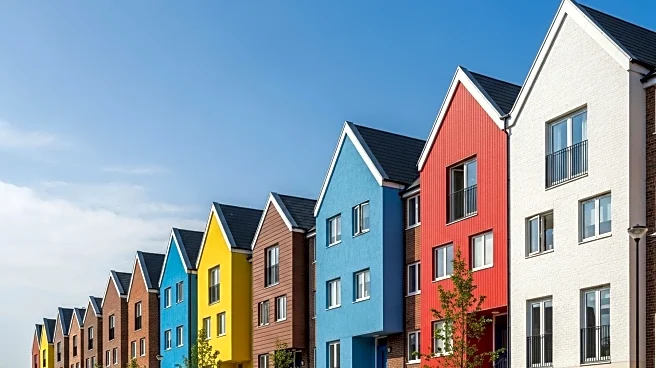What's Happening?
A new affordable housing scheme in Grantham, known as Knapp House, is set to open in November with 21 homes. However, Councillor Virginia Moran has described the project as insufficient compared to the increasing housing waiting list in South Kesteven, which has grown from 1,000 to 1,500 people. Critics attribute the shortage of affordable housing to the Right to Buy scheme, initiated by Margaret Thatcher's government in 1980, which allowed council tenants to purchase their homes at a discount. Over the years, this policy has led to a significant reduction in council-owned homes, dropping from 9,728 in 1980 to 5,800 in 2025. Despite the criticism, supporters of the scheme argue that it has expanded home ownership significantly.
Why It's Important?
The debate over the Right to Buy scheme highlights the ongoing challenges in balancing home ownership with the availability of affordable housing. While the policy has enabled many families to own homes, it has also contributed to a decrease in public sector housing, exacerbating the housing crisis. The reduction in council homes impacts low-income families and individuals who rely on affordable housing options. The recent changes introduced by the Labour government, including reduced discounts and exemptions for newly built social housing, aim to address these issues but may face opposition from those who benefit from the scheme.
What's Next?
The Labour government's recent policy changes, such as reducing discounts and exempting new social housing from Right to Buy for 35 years, are expected to slow the scheme's impact. Additionally, tenants will need to have lived in their properties for at least 10 years before qualifying to buy, up from three years. These measures are intended to preserve affordable housing stock, but their effectiveness will depend on implementation and public reception. The Ministry of Housing, Communities and Local Government has been contacted for further comments.
Beyond the Headlines
The Right to Buy scheme raises ethical questions about the balance between individual home ownership and community housing needs. The policy's long-term effects on social housing availability and community stability continue to be debated. As housing demand increases, the need for sustainable solutions that address both ownership aspirations and affordable housing availability becomes more pressing.











